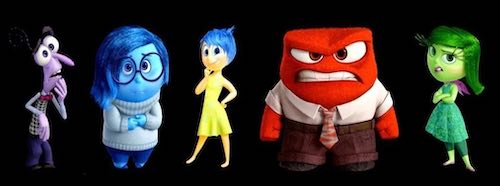Versatile but not inconsistent
I can be a very different person depending on the circumstances: angry infantile infantile calm frivolous responsible insensitive empathic, etc. Some aspects are marked and serve in my loved ones to define ‘my personality’. Nevertheless, if I am calm or angry, my appearance changes quickly, which makes the unity of my ‘I’ suspicious to others. I can doubt with them: How could I say such a thing, behave in this way? Are the circumstances alone guilty? Not. If that were the case, I would be perfectly predictable: this context = this reaction. But it is difficult for me, as for others, to guess my future behavior. There is no CEO in our consciousnesses who would trace our personal policy in advance.
My versatility could come from the multitude of ideas that cross my head. Unpleasant or pleasant evocations influence my mood. Words and deeds are affected. Finally, isn’t my appearance simply the emergence of this permanent mental maelstrom? Either. Because my personality would be perfectly fluid, rather than camped on its different aspects. What are these postures made of? How do ideas of a certain color aggregate to form an appearance that endures, temporarily discarding others? How does a maelstrom build an island?
My assembly of ‘persona’
I understand myself better by making ‘me’ an assembly of personality elements. Let’s call them ‘persona‘. I feel the tug-of-war between their tendencies. These pulls are permanent. What is moving is the confrontation with the environment. Persona negotiate behavior that is not random or chaotic. It reflects the temporary domination of a persona. Like a legislative assembly that agrees with the most eloquent speaker.
This inner psychic society I initially called ‘polyconsciousness’. The term can be confusing, consciousness being fusional experience. ‘Psociety‘ (contraction of ‘Psychic society’) is technical but more demonstrative. The Psociety is therefore an assembly of personas, complex elements of personality themselves dismemberable into underlying concepts. Persona share the same ideas but are independent confluences. They explain that we move from one type of behavior to another while maintaining an intrinsic consistency.
The most demonstrative examples of the existence of the Psociety are the major events of life. Trauma, dispossession, disappearance of a loved one, illness from which we have barely escaped. The individual suddenly sees existence in a different light. He doesn’t really think about it. He becomes someone else. The assembly of its persona is reorganized. He abandons some favorite attitudes, chooses others. For his relatives, his personality changes radically. Resilience. Difficult to explain, both psychologically and neurologically, except to use the concept of Psociety. The seats of the persona waltzed. A new president was elected to the assembly.
Connection with personality theories
There are many psychological theories that refer to the Psociety without naming it that way. Eric Berne’s transactional analysis postulates “states of the self” (parent, child, adult) and focuses on their interactions. These are simplified versions of persona. Marvin Minsky’s society of psychic microrobots is inspired by artificial intelligence. It sees cognition as a competition of agents producing partial responses, arbitrated by higher agents (similar to persona overseeing underlying concepts). The hypostatic model summarized by Codrin Ţapu designs hypostases that are also the multiple aspects of personality. It combines Minsky’s upward approach and Bern’s downward. The Psociety adds the essential notion of hierarchy to the building. Hierarchy of psychic levels endowed with relative independence. Explaining that there is an upward and downward view of each of them: these approaches need an independent starting point.
The difficulty of scientifically testing these models is obvious: the most “official” theory of personality is the Big Five, a summary list of temperament traits unable to reflect the richness of a personality and its dynamics. Regression compared to the last century, when the original theories flourished.
The Psociety is not testable but experienced, in the first person. Similarly, by following the upward path of neural organization, we arrive at the intentional syntheses that are personas. The two looks converge on the Psociety. Use it. It is, in therapeutic, very useful.
*
See also:
Hierarchy synthesis

